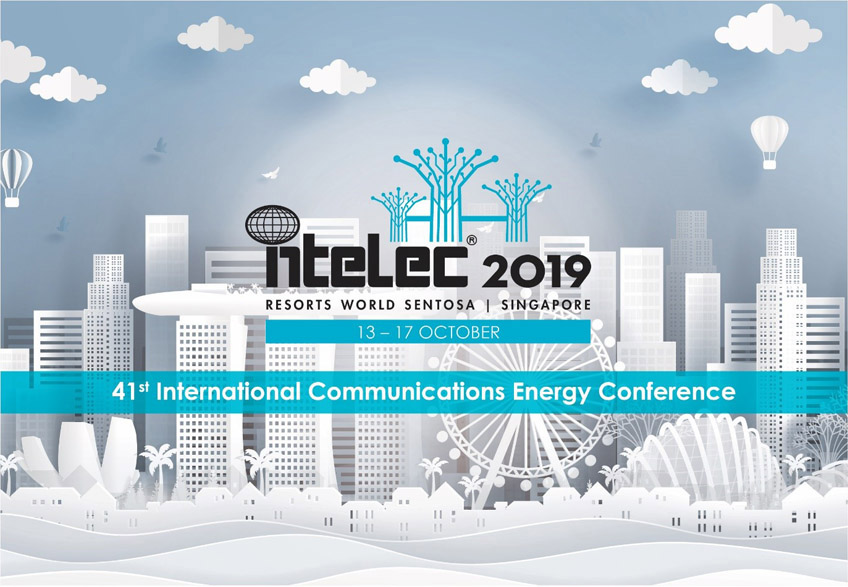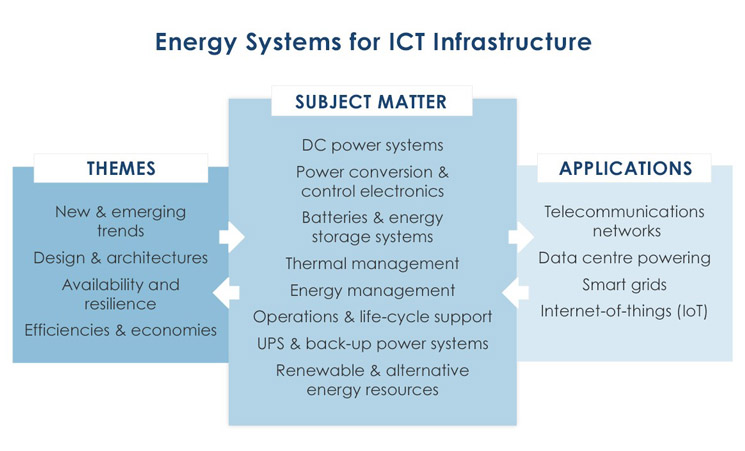In May 1975, Messrs. N. Osifchin, B. J. Yokelson, and J. J. Suozzi of Bell Telephone Laboratories developed the idea of an international conference on telephone energy systems. During visits to England, Sweden, Holland, France, Germany, and Italy to discuss power for telecommunications, the idea of an international conference on telecommunications energy was discussed and gained favor with many telecom administrations. In March 1976, Bell Labs management granted permission to the founding team to work on launching such a conference, sponsored by an entity of the Institute of Electrical and Electronics Engineers (IEEE) and open to all, and the planning for the conference began. In November 1976 the plan for the conference was presented to the Meetings and Conference Department of the IEEE Communications Society (COMSOC) at a meeting in Philadelphia. COMSOC accepted the proposal and agreed to be the sponsor. The first conference was scheduled for October 25-27, 1978, at the Sheraton Hotel in Washington, DC with J. J. Suozzi as Chairman.
The conference was called "The International Telephone Energy Conference" from which the term "INTELEC" was derived. In 1979 the name was changed to "The International Telecommunications Energy Conference," and the term "INTELEC" was retained.
During 1977 and 1978, intensive plans were also being drawn to form a governing body for the conference. This was accomplished by 1978 with the formation of an INTELEC Advisory Committee, representing the world community and presided over by N. Osifchin. The first Advisory Committee meeting was held in October 1978, at the first INTELEC conference, and an immediate debate arose as to how often the INTELEC conferences should be held. A second INTELEC conference was planned for November 1979, chaired by W. M. Miller (Lorain Products), a Planning Committee (later becoming the Conference Executive Committee (CEC)) was mandated to prepare recommendations on the frequency and plans for future meetings and J.J. Suozzi was appointed to write a Constitution and Bylaws for the INTELEC organization.
The second INTELEC conference was held with an even more enthusiastic turnout than the first and plans began for the first INTELEC conference outside of North America, with I. G. White of the British Post Office as Chairman, for May 1981. The success of the 1981 meeting led to the acceptance of the concept of an annual INTELEC conference.
By 1986, the international character of the INTELEC conference was ensured by constitutional changes providing for a 50%-50% American and non-American balance of Advisory Committee membership and by acceptance of a six-year cycle with three meetings in North America, two in Europe, and one in Asia.
In 1991, negotiations among COMSOC, INTELEC and the recently formed IEEE Power Electronics Society (PELS) resulted in an agreement to transfer sponsorship of INTELEC from COMSOC to PELS, where it joined the Applied Power Electronics Conference (APEC®) and the Power Electronics Specialists Conference (PESC®), which are also sponsored by PELS.
Over its history, INTELEC conferences have been held in Washington, London, Tokyo, New Orleans, Munich, Toronto, Stockholm, San Diego, Florence (Italy), Orlando, Kyoto, Paris, Vancouver (Canada), The Hague, Boston, Melbourne (Australia), San Francisco, Copenhagen, Phoenix, and Edinburgh (Scotland). The 2002 conference was held in Montreal. Future conferences are planned for Yokohama, Chicago, Berlin, and Rome.
After the fall of the Berlin Wall and the opening of Eastern Europe borders, there was a strong desire to hold telecommunications energy conferences in Germany and Eastern Europe. The Advisory Committee approved establishment of a smaller conference, the Telecommunications Energy Special Conference (TELESCON®) to address this need. The first TELESCON conference was held in Berlin in the spring of 1994. Additional spring conferences took place in Budapest in 1997 and Dresden in 2000. Continuing the three-year cycle, the next TELESCON conference will be held in Rio de Janeiro in June 2003.
INTELEC and TELESCON conferences now provide a venue for telecom, datacom, wireless and cable television operators and vendors of all types of power equipment used by these and related service providers. A typical conference has technical papers and exhibits covering:
- Integration of the diverse power requirements of the service providers
- Batteries
- Power for telecom and datacom systems
- Power for cellular and personal communications systems (PCS)
- Power for multimedia networks
- Power for cable television systems
- New technology power generation and energy storage systems
- Dc power plants and their components
- Power system architectures
- Flywheel energy storage systems
- Dc-dc converters
- Ac power supplies--inverters and uninterruptible power systems (UPS)
- Primary power systems—engine-alternators, fuel cells, solar and wind systems
- Building and environmental systems
- Physical and thermal design
- Electromagnetic compatibility
- Grounding and bonding
- Standards and specifications.
Recent conferences have included tutorial sessions in addition to the technical sessions. Experts in the subject matter conduct the tutorials, and attendees earn continuing education credits. Future conferences will undoubtedly cover new technologies to meet the evolving needs of the participants.
Provided by J.J. Suozzi with inputs from Chris Riddleberger, Mark Jacobs and Michael Davis.







